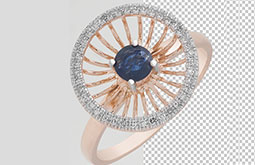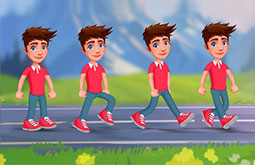Most Popular 15 Types of Children's Book Illustration Styles
A lot of things go into creating a children’s book. Catering to their tender, young, and imaginative minds is not the cup of tea for any illustrator. The stories told in the books must be brought to life through captivating illustrations. Whether they are for pedagogic purposes or simply bedtime stories, children’s books are a canvas for imagination.

Today, in this highly engaging article, we are going to discuss the best types of illustrations for children's books ideal for all. There are diverse techniques and ranges of style that enchant young readers. These can take the form of traditional watercolor drawings or contemporary digital designs. Each style is unique in its own merit and must be explored closely to shape fairy tales or bedtime stories.
So, without further ado, let’s start with our journey to define this dynamic artistic landscape of designing kids’ books.
Children book authors have a handful of illustration styles to choose from for their content that help kids understand the story better. Illustrators can play around with multiple styles, color palettes, and textures to set the tone of the book. That is why it is best for authors to partner with professional illustrators who can align the graphics with the essence of the book’s content.
Keeping this idea in consideration, let’s explore the 15 best contemporary children book art styles that breathe life into the storybook characters. Each style offers a unique visual appeal to the narratives.
-
Watercolor illustration

Illustrations done in this distinct medium offer a soft, dreamy tone to the images, almost creating an enchanting atmosphere. The watercolor style is ideal for fairy tales or nature-themed stories where gentle narratives are present. This style, with its fine brush strokes, is best-suited for kids’ books that create magic and nostalgia.
-
Cartoon-style illustration
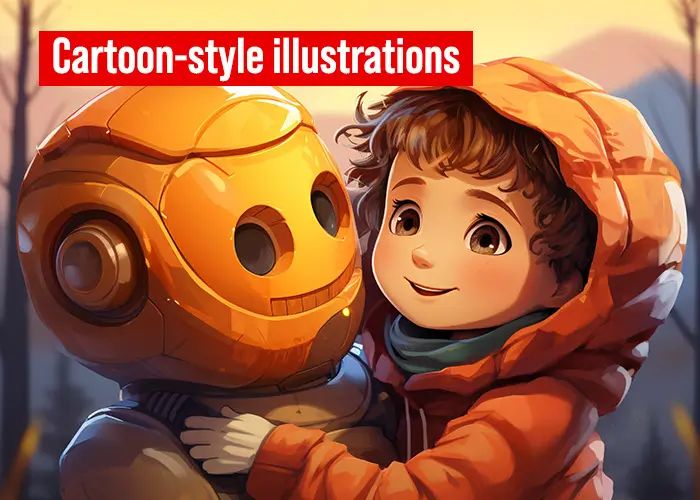
Cartoon-style illustrations are goofy, vibrant, and, to some extent, exaggerated. This particular style easily connects with youngsters, as they can associate their known cartoon characters with these images. These help kids explore their imaginative worlds and channel their creativity. It goes without saying that this style is the most used by children’s book illustrators. This is one of the most popular children book illustration styles.
-
Digital art
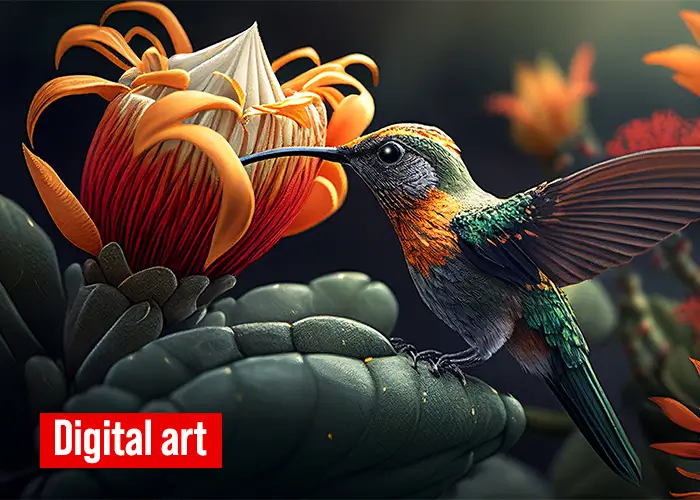
Recent technological advancements have made digital drawings a popular art choice for illustrating children’s books. These digital illustrations offer a wide range of creative possibilities, allowing the artist to experiment with different textures, colors, compositions, etc. Creating these graphics is easy and hassle-free, given the use of digital graphics tools and software.
-
Vintage style illustration
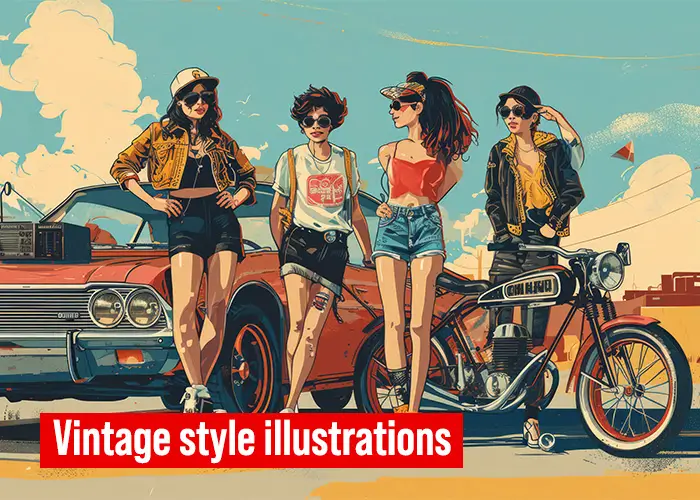
For all the timeless classic tales evoking the charm of bygone days, the vintage illustration style is more than ideal. This style is still loved by children, as it creates a cozy and familiar feeling for them. The subdued pencil drawings have an enduring charm, perfect to celebrate nostalgia. These drawings transport modern youngsters to a land of the past, creating a connection with their parents and grandparents.
-
Realistic illustration
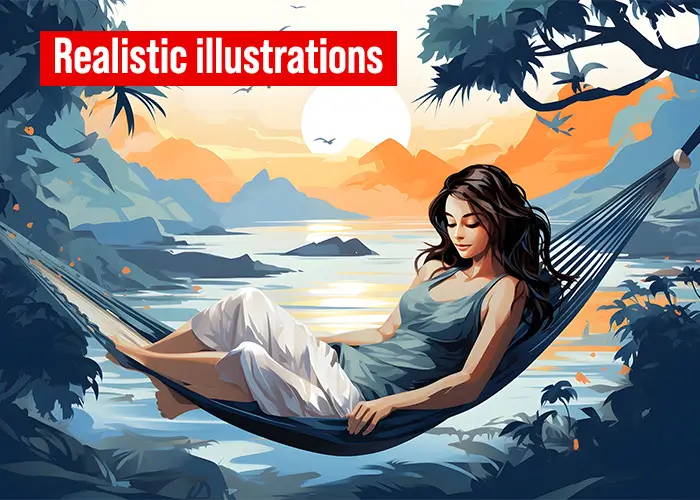
Realistic illustrations offer true-to-life pictorial depictions of settings, characters, and narratives. This style is more suitable for non-fiction children’s books or biographies focused on teaching true stories. These pictures consist of realistic proportions and detailed textures, enhancing the overall storytelling experience. This style is different from the more playful styles discussed above and is the perfect choice for historical and educational content.
-
Line drawing illustration
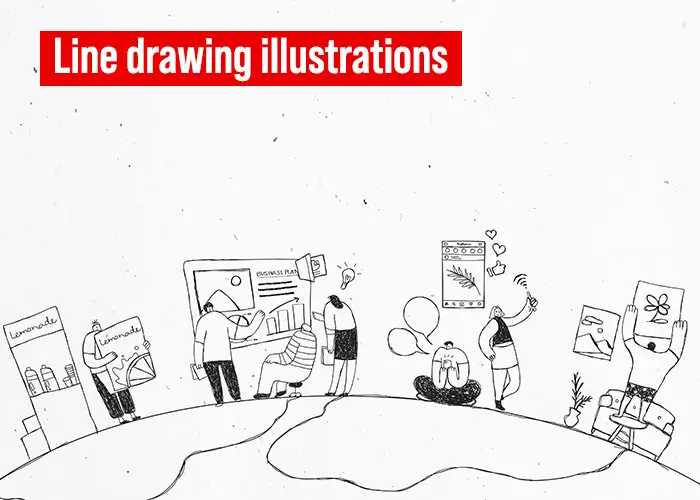
Also known as single-line illustrations, the line drawing illustration style is minimal and focuses on simplicity. Clever usage of negative space lets the readers’ imagination fill in the gaps and unleash their imaginative feelings. In just one continuous black and white stroke, the artist can depict complex forms and thought-provoking stories. Being a very simple illustration style, especially for children’s coloring books, this approach gives the child interactive learning experience while they color them.
-
Abstract design
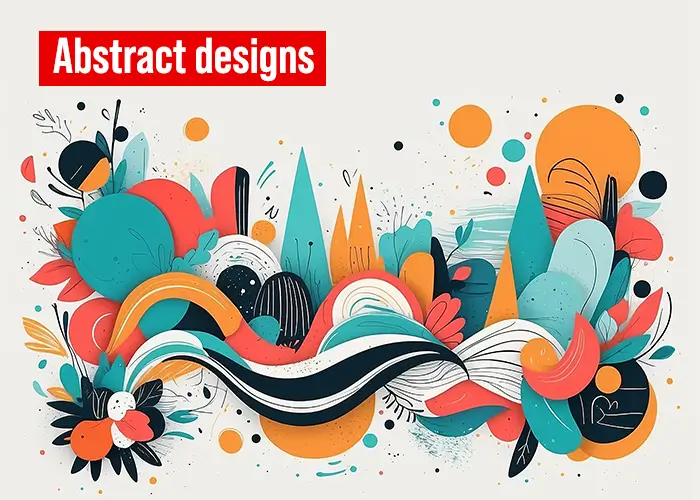
Abstract art and designs are exaggerated, but in a more artistic manner. Unlike the realistic approach, this one is more into emphasizing the colors, patterns, and shapes to encourage young readers to think out-of-the-box. As a result, this style ignites creativity in them in imagining the story in their own way. The abstract illustration style is best for stories revolving around adventures, abstract concepts, poetry books, etc.
-
Funny and quirky style
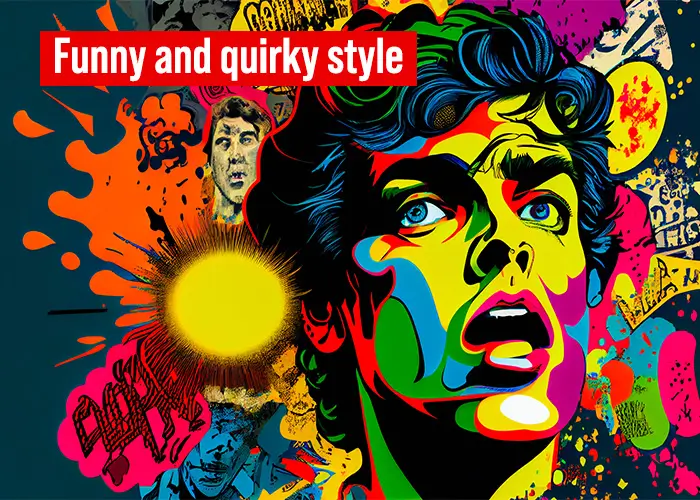
This silly yet vibrant style of drawing makes children’s storybooks a one-of-a-kind reading experience. These whacky illustrations have intentionally silly and quirky faces and body proportions, often replicating a child’s mind. This style is ideal for kids who are just starting to read, understand toilet training, etc. Through wit and humor, the artist holds a child’s attention and keeps them engaged for a long time.
-
Sketch illustration
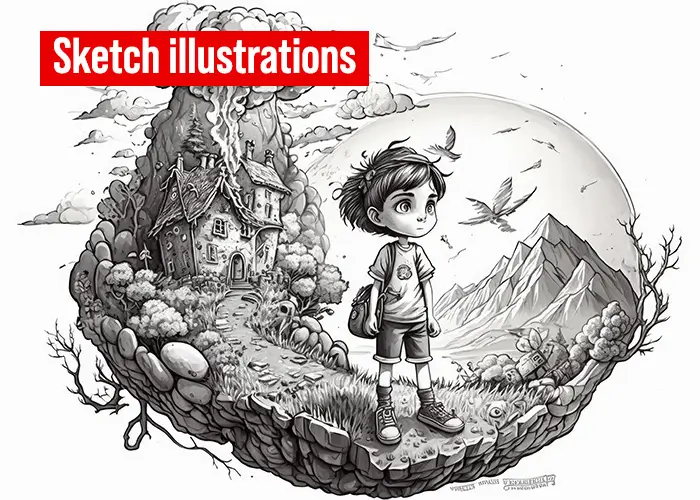
Sketch illustrations are classing pen and ink, black-and-white artworks captivating readers’ attention. This approach has multiple applications other than children’s books, such as magazines and books. In children’s story books and magazines, sketch-style illustrations visualize complex narratives evoking strong feelings.
-
Whimsical illustration
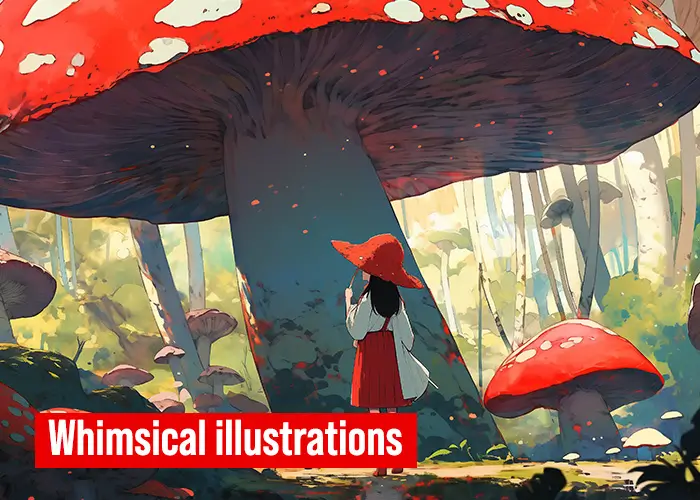
Whimsical illustrations are totally opposite to realistic artworks. They usually feature quirky details, playful characters, and magical creatures with oversized eyes or heads, elongated limbs, enchanted forests, etc. Given these visual elements of children's books, this type of image style is also called fantasy illustration. To make the children’s story books all the more dreamy and fantastical, illustrators often use whimsical artwork, using dreamlike settings as the backdrop. The landscapes in these stories are filled with colorful, lively details in bright pastel tones.
-
Exaggerated illustration
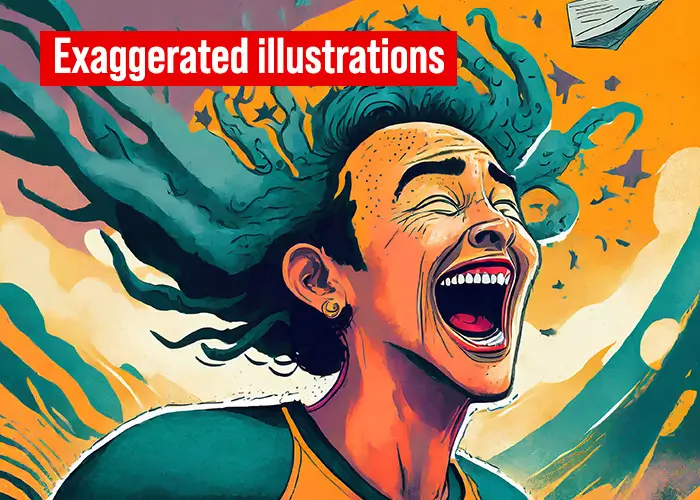
These illustrations go over-the-top by exaggerating the expressions, body proportions, colors, and shapes of the storybooks’ characters. This specific drawing style moves away from realism, but is not quite similar to the abstract artform. In this approach, the illustration artist creates larger-than-life drawings of the main characters or the hero to draw the readers’ attention to them. This adds an extra layer of charm to the books.
-
Bold and bright graphic style
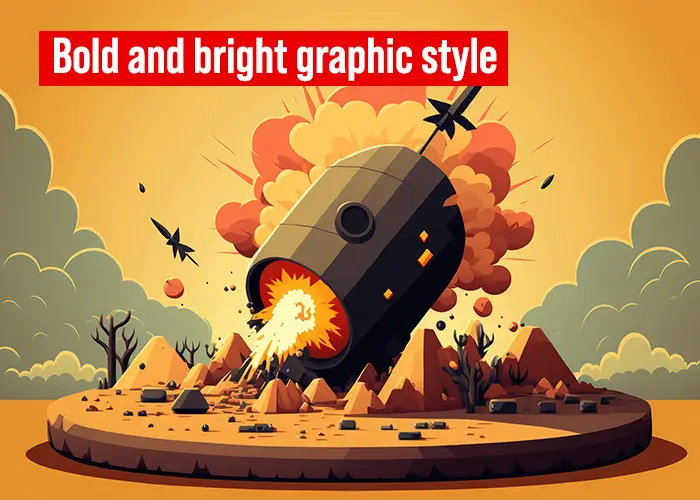
Small children are incredibly flexible readers. They can easily accept bold and brightly designed imageries conveying the content of the book. Especially if the book caters to toddlers, the images must have a bold intonation, evoking liveliness and activity. The character designs must be larger-than-life with a happy tone. Mostly folklore-styled stories and fables meant for toddlers and young readers feature this particular style of artwork.
-
Mixed-media illustration
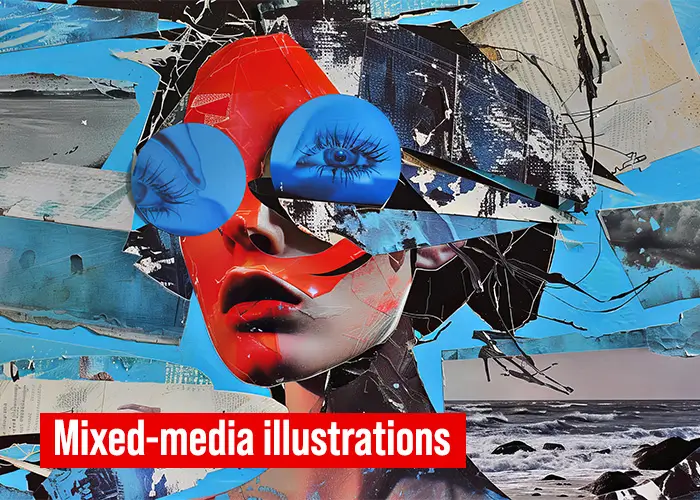
As the name goes, mixed-media illustrations combine multiple drawing techniques, such as digital artwork, watercolor painting, collage art, and more. That’s how the artist produces dynamic and unique illustrations that captivate young readers’ minds.
The vibrant landscapes, detailed characters, and natural-looking textures blend traditional children's book styles and digital approaches. This kind of experimentation is highly recommended for children’s stories featuring funny characters, magical creatures, mythical forests, castles, dragons, etc.
-
Subdued tone style
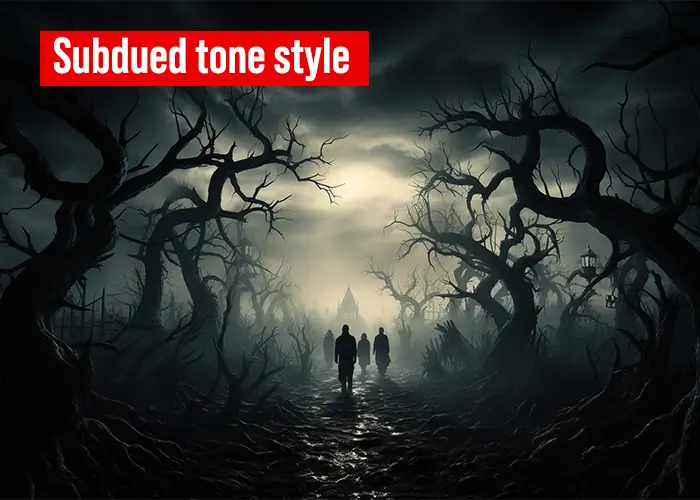
As the name suggests, subdued illustration is a muted and more serious imagery type. This style is perfect for children’s stories that have atmospheric horror or deal with serious undertones. It is a stark contrast to the bold and bright style (discussed above) and mostly creates a sense of emotional calmness.
The color palette used is typically comprised of greys, pastels, and muted earth tones that add depth and complexity to the visuals.
-
The Wimmelbuch style
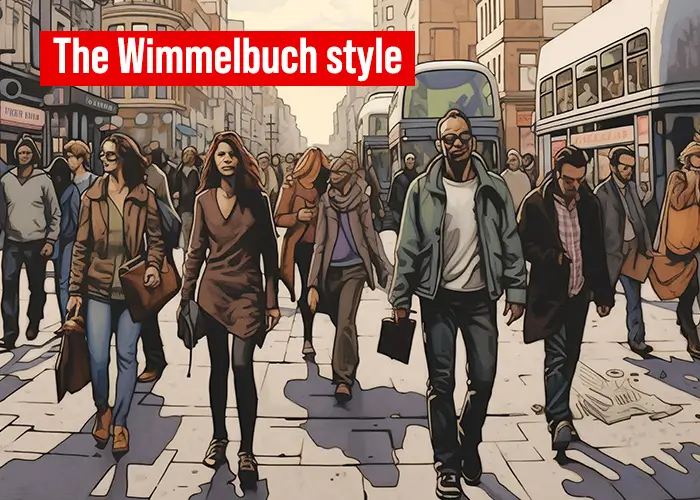
The last entry in the categories of illustration for kids’ literature is the Wimmelbuch style. Originating in Germany, the Wimmelbuch illustration style is a unique, captivating, and delightful approach to children’s storybook images. Its distinct feature is easy to recognize; it also makes this style stand out.
For instance, the Wimmelbuch style is densely packed with multiple detailed characters. These can be humans, animals, busy streets, vehicles, or other objects. This style is mostly used for large-format, wordless books and usually has an aerial perspective.
The Wimmelbuch style is very popular among children as it piques their curiosity. These imageries make them connect with the story and encourage them to explore and find new things in the densely packed pictures.
There you are! A complete guide to different children's book illustrations. Each of the 15 styles and types offers something new and allows illustrators to complement the storytelling. Following these diverse ranges of artistic styles and tips, authors can engage more young readers in 2025, as well as beyond.
Professional children's book illustration service providers create such exciting and clever imageries that make each book a visual treasure hunt for the kids. So, if you are an author or an illustrator, choose an illustration style from the above that aligns with your content.
Now, let’s check out the potential future trends that are supposed to impact these children's storybook images and illustrations.
Importance of illustrations in children's books
Before we start discussing the distinct illustrative styles, first let us understand why illustrations matter so much in children’s books. You see, children are visual learners. They have tremendously imaginative and creative minds that run wild. Mere texts or generic pictures cannot connect these young minds on a deeper level. Colorful, intriguing, and custom illustrations sprinkle more fun into their reading process and foster visual engagement.
Here’s a detailed look at why children’s books need detailed and visually compelling illustrations.
-
Capture attention
As we know, small kids are visual learners. Illustrations grab their attention, make the story or lesson much more relatable, and help them remember it better. This eventually leads to better engagement with the book.
-
Enhance comprehension
Complex subjects and data require visual cues, even for the grown-ups. That said, with illustrative pictures, it is easier to convey abstract concepts and ideas to the kids. These visual cues make the narrative more meaningful to them.
-
Create emotional connection
Small children are inherently emotional and sensitive. They are naturally drawn towards expressive illustrations that evoke emotions in them. The emotions can range from curiosity, sadness, happiness, surprise, and so on. Seeing the illustrations, they start empathizing with the storybook characters and their plights. This is one of the main characteristics of children's book illustrations.
-
Stimulate imagination
As we know, young kids are born imaginative. Storybook illustrations help stimulate this imaginative quotient in them further. If you ask how, they encourage young readers to visualize scenes, settings, and characters in their minds, fostering a love for stories and literature at an early age.
-
Improve language development
Attractive storybooks with visually captivating pictures are a must-have for every young parent. The meaningful illustrations reinforce language development in their kids, helping them associate words with the images. The entire process happens subtly and in a creative manner, improving the kids’ comprehension skills, linguistic skills, and vocabulary.
-
Foster culture exposure
Kids’ story illustrations usually depict different cultures, diverse traditions, and livelihoods. Through these pictorial depictions, children develop a broader worldview from a very early age, fostering cultural awareness and acceptance.
-
Facilitate logical thinking
Illustrative visuals are crucial to a child’s learning process, as well as logical thinking. When a small child analyzes an illustrative image in their storybook, they actually interpret visual information and draw conclusions. This greatly increases their cognitive abilities.
Thus, you see, the process of children acquiring knowledge depends significantly on images forming strong connections in their minds. That’s why well-crafted illustrations make a book memorable, whether school lessons or playtime books. These works of art and designs even help reluctant readers focus their concentration and encourage them to read. In short, illustrations not only enhance children’s cognitive abilities, but also foster empathy, ignite creativity and imagination, and, lastly, create a knack for reading.
Future trends in children's book illustration
While it is difficult to say for sure what exactly will transform illustrations in children’s literature, there are trends that somewhat predict the imminent transformations. Let us explore this speculative area of emerging themes and technologies that are likely to influence children’s storybook pictures.
-
Interactive illustration
With significant advancements in augmented reality (AR), virtual reality (VR), and other similar interactive technologies, more and more children’s books will adopt interactive illustrations. Young readers are now tech-savvy from a very early age; they can simply use devices or head gears to see the story characters come to life. This will encourage them to explore the 3D environments and unlock hidden content within the book.
-
Environmental themes
The environmental issue is one of the biggest matters in discussion now. That said, we can see many children’s literature authors revolving their content around ecological issues, sustainability, and conservation efforts. Thus, the illustrations will also depict the said issues and environmental challenges, conveying the importance of protecting the planet to juvenile readers.
-
Inclusivity and diversity
Besides environmental issues, inclusivity and diversity are the next big things. There’s a rising demand for children’s content to be more inclusive and cater to cultural and ethnological diversity. Hence, future trends likely predict book illustrators depicting characters from various socio-economic backgrounds, gender orientations, family structures, ethnicity, and so on. This will make the children of tomorrow more empathetic, compassionate, and sensitive.
-
Personalized imagery
There’s a steady growth in personalized books with custom options meant for small and growing kids. This paves the way for more personalized illustrations where the recipient could see “avatars” or characters made upon them. The name, interest areas, and hobbies will all be reflected in these illustrations, adding a layer of personal connection.
-
AI-based images
With the boon of AI-powered tools, illustrators can unleash much more creativity and artistry within a short time. AI tools can help artists generate enthralling story backgrounds and scenes, color palettes, futuristic characters and objects, etc. Although human intelligence and creativity will still remain the prime requisites, this technological paradigm shift will allow artists to focus on creative expression and storytelling both.
-
STEM & STEAM integration
STEM (Science, Technology, Engineering, Mathematics) and STEAM (Science, Technology, Engineering, Arts, Mathematics) concepts will be more prevalent in future illustrations for juvenile literature. Just as these concepts are predominant in academic lessons, storybooks, and fiction, we could also see visuals representing scientific principles with a touch of art. This will further boost technological innovation, critical thinking, and coding adventures in kids from an early age.
All the future trends in kids’ storybook illustrations mentioned above are manifestations of a dynamic and evolving landscape. This landscape is driven by cultural changes, technological advancements, scientific innovations, creative expressions, and much more. We can predict that we are gradually moving towards a more exciting time where children’s book authors, artists, and young readers can all experience a high level of visual experience.
Conclusion
That’s all for now! It’s an official wrap to our comprehensive guide on children’s book illustration styles. Hope it was an enjoyable read. As key takeaways from this resourceful article, we can say the importance of illustrations in children’s books cannot be overlooked. Also, we hope the 15 distinct illustration styles will help any beginner illustration artist enrich their workflow. Lastly, the trends and predictions in the illustration landscape will also keep professional book imagery designers on their toes. They can hone their skills and be prepared for the future.
As we look deeper, authors and book publishers must think out of their way to connect with young readers. The first step to doing this is to search for experied professionals and partner with them. They have years of hands-on experience in offering various types of illustration services and can create captivating visuals that children like.
So, embrace the diverse illustration styles and inspire the modern generation of readers. Transport them to magical worlds with effective imagery and let them explore complex ideas with wonder and curiosity.

